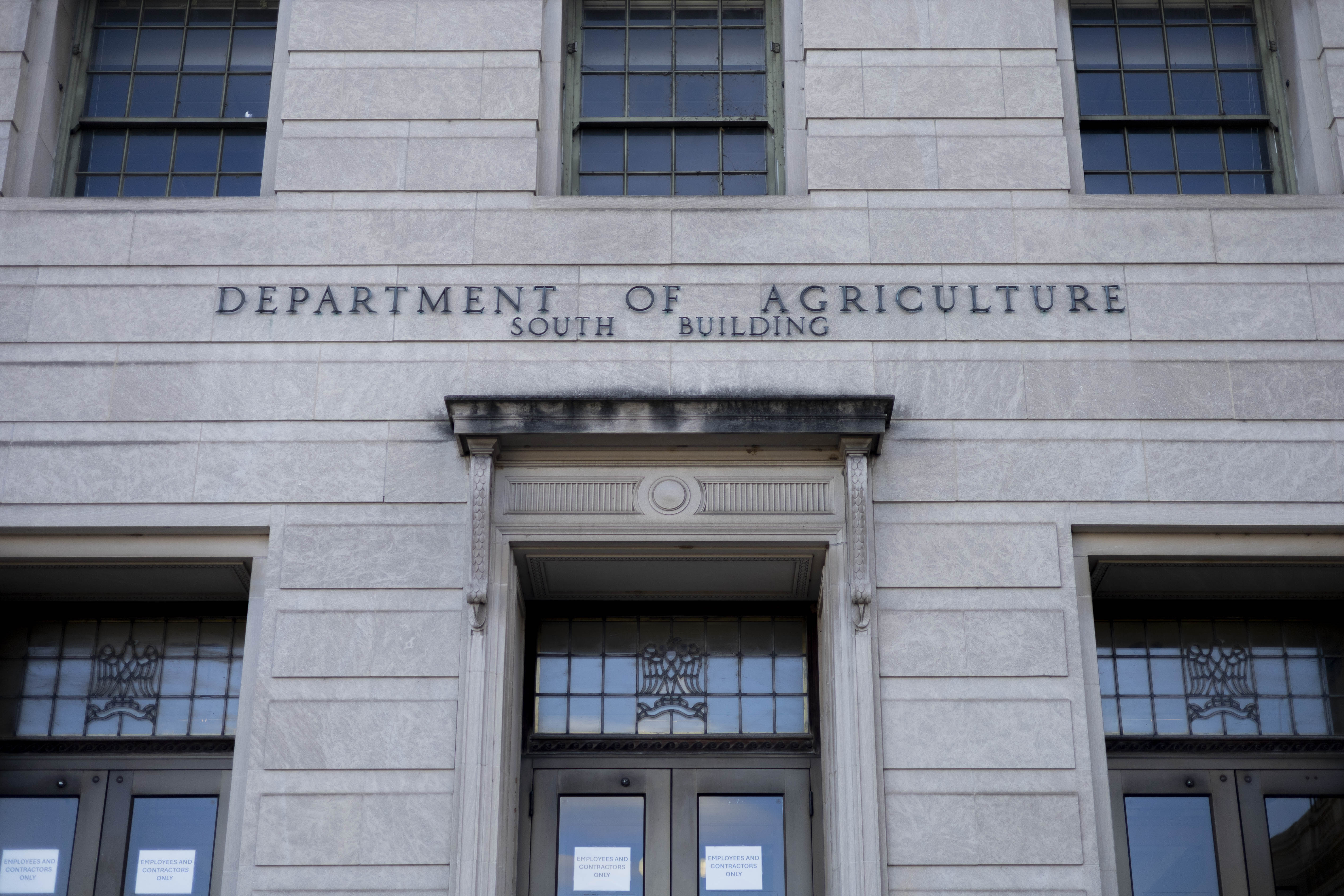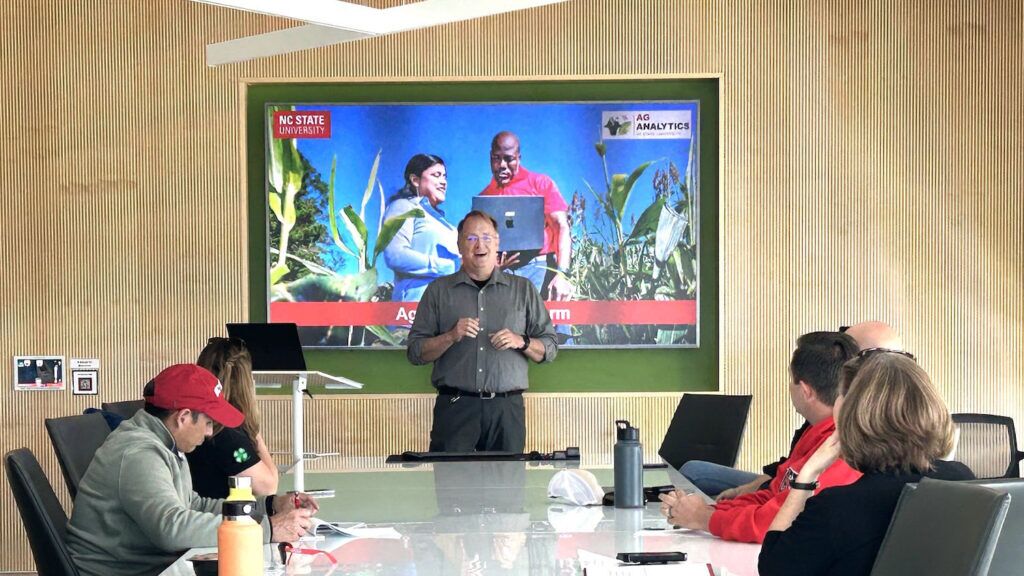Food recovery systems event at UCLA educates community on sustainability solutions – Daily Bruin

Report on the “Closing the Circle 2025: From Excess to Access” Conference
Event Summary and Alignment with Sustainable Development Goals
On October 17, a conference titled “Closing the Circle 2025: From Excess to Access” was held at Hershey Hall to address food recovery systems. The event directly supports several United Nations Sustainable Development Goals (SDGs), primarily SDG 2 (Zero Hunger) and SDG 12 (Responsible Consumption and Production), by focusing on reducing food waste and improving food access. The conference emphasized SDG 17 (Partnerships for the Goals) by bringing together key stakeholders to foster collaboration.
- Organizers:
- UCLA Rothman Family Institute for Food Studies
- Los Angeles Food Policy Council
- FoodCycle
- End Hunger LA
- Objective: To connect professionals, share best practices, and build collaborations to improve food recovery, thereby creating more sustainable and equitable food systems.
Harvesting Solutions: Addressing Agricultural Inefficiencies (SDG 2, SDG 12)
A key session, “Harvesting Solutions,” examined the agricultural sector’s role in food recovery, directly targeting SDG 12.3, which aims to halve per capita global food waste at the retail and consumer levels and reduce food losses along production and supply chains.
- Hosts: Lisa Johnson (United States Department of Agriculture) and Kristen Johnson (Food Forward).
- Identified Problem: A primary issue discussed was the lack of financial incentives for farmers to donate surplus produce from gleaning (collecting leftover crops). The costs associated with packing and transportation result in a net loss for farmers.
- Proposed Solution: The implementation of refunds or tax credits was suggested as a viable incentive to encourage farmers to donate excess produce, thereby reducing food loss at the production stage and increasing the supply of food for those in need.
- Key Takeaway: Kristen Johnson emphasized that sufficient food is produced to feed the entire population of the United States, highlighting that the challenge lies in distribution and waste reduction, not production volume.
Utilizing Data to Address Food Insecurity (SDG 2, SDG 11)
A presentation by Dr. Kayla de la Haye focused on the application of data science to understand and combat food insecurity, contributing to SDG 2 and SDG 11 (Sustainable Cities and Communities) by mapping and addressing urban food access gaps.
- Core Concept: Dr. de la Haye presented “systems maps” that illustrate the complex and interconnected local drivers of food insecurity.
- Central Argument: The maps demonstrate that food insecurity is not caused by a single factor and therefore requires coordinated, multi-faceted solutions rather than a “silver bullet” approach.
- Impact: Attendees noted the value of using data to reveal geographic disparities in food access across Los Angeles and to guide the development of targeted, effective social good initiatives.
The Imperative of Collaboration and Partnerships (SDG 17)
A recurring theme throughout the conference was the critical importance of collaboration, reflecting the core principle of SDG 17 (Partnerships for the Goals).
- Organizer’s Mission: Conference organizer Elias Jabbe stated that the event’s primary purpose was to connect individuals and organizations to prevent working in silos, share best practices, and create new collaborations.
- Expert Opinion: Alba Velasquez, Executive Director of the LA Food Policy Council, highlighted that the food systems sector offers diverse opportunities for involvement, including environmental sustainability, economic development, and public health. This cross-sectoral nature necessitates strong partnerships.
- Event Goal: Erica Lee, Assistant Director for the Rothman Family Institute for Food Studies, reiterated that the event aimed to “plant a seed” for future collaborative solutions by fostering connections among attendees.
Participant Perspectives and Future Engagement
Attendees and volunteers found the event impactful, connecting the discussions to personal and professional goals related to health, data science, and community service.
- Health and Nutrition (SDG 3): An attendee, Tanisha Gunby, noted the compelling link between food insecurity and chronic health conditions, underscoring the connection between food systems and SDG 3 (Good Health and Well-being).
- Student Involvement: Students expressed a desire to become more involved in food initiatives. Organizers recommended that students continue to build relationships with organizations and participate in on-campus groups like Bruin Dine to contribute to food recovery efforts.
Analysis of Sustainable Development Goals in the Article
1. Which SDGs are addressed or connected to the issues highlighted in the article?
The article on food recovery solutions addresses several interconnected Sustainable Development Goals (SDGs). The primary goals identified are:
- SDG 2: Zero Hunger: This is the most central SDG in the article. The entire event, “Closing the Circle 2025: From Excess to Access,” is focused on combating food insecurity and ensuring that surplus food reaches those in need. The article explicitly mentions “tracking food insecurity rates” and the idea that “we produce enough food to feed everyone in the United States.”
- SDG 12: Responsible Consumption and Production: The article directly addresses the problem of food waste and loss, which is a key component of SDG 12. The discussion on “gleaning – the practice of collecting leftover crops after harvest” and improving food recovery systems are clear efforts to create more sustainable patterns of consumption and production by reducing food loss at the agricultural level.
- SDG 17: Partnerships for the Goals: The article repeatedly emphasizes the importance of collaboration. The conference itself is a partnership between academic institutions (UCLA) and local organizations (Los Angeles Food Policy Council, FoodCycle, End Hunger LA), and involves government bodies like the USDA. The organizer states the mission is “collaboration, partnerships and conversations” to ensure stakeholders are not “working in silos.”
- SDG 3: Good Health and Well-being: A secondary but important connection is made to SDG 3. An attendee noted that combating food insecurity is compelling “because of how the issue is tied to many chronic health conditions,” linking food access directly to public health outcomes.
2. What specific targets under those SDGs can be identified based on the article’s content?
Based on the issues discussed, the following specific SDG targets can be identified:
-
Target 2.1: By 2030, end hunger and ensure access by all people… to safe, nutritious and sufficient food all year round.
- Explanation: The conference’s focus on turning “Excess to Access” and addressing “community food needs” directly supports this target. The work of Kayla de la Haye in creating “systems maps” to depict “local drivers of food insecurity” and identify “geographic gaps in food access” is a direct attempt to understand and solve the problem of ensuring universal access to food.
-
Target 12.3: By 2030, halve per capita global food waste at the retail and consumer levels and reduce food losses along production and supply chains, including post-harvest losses.
- Explanation: The article’s discussion of “gleaning” as a way to collect “leftover crops after harvest” is a specific strategy to reduce post-harvest food losses, which is a key part of this target. The entire theme of “food recovery” is aimed at preventing surplus food from becoming waste, thus reducing food losses along the supply chain.
-
Target 17.17: Encourage and promote effective public, public-private and civil society partnerships, building on the experience and resourcing strategies of partnerships.
- Explanation: The event described is a model of this target in action. It is a multi-stakeholder partnership involving academia (UCLA, USC), government (United States Department of Agriculture), and civil society organizations (Los Angeles Food Policy Council, FoodCycle, End Hunger LA, Food Forward). The stated purpose of the conference is to “connect people who are doing this work” and to foster “collaboration, partnerships and conversations.”
3. Are there any indicators mentioned or implied in the article that can be used to measure progress towards the identified targets?
The article mentions or implies several ways to measure progress, which align with official SDG indicators:
- For Target 2.1: The article explicitly mentions an indicator used by one of the speakers. Kayla de la Haye’s work involves “tracking food insecurity rates.” This directly corresponds to Indicator 2.1.2: Prevalence of moderate or severe food insecurity in the population. The use of data and maps to show “geographic gaps in food access” is a method for measuring and analyzing this indicator at a local level.
- For Target 12.3: While no specific metric is given, the article implies an indicator through its discussion of food recovery. The practice of “gleaning” and recovering surplus produce can be quantified. Progress could be measured by the volume or percentage of post-harvest crops recovered that would have otherwise been lost. This relates to Indicator 12.3.1 (a): Food loss index, which measures losses along the production and supply chain.
- For Target 17.17: The article provides qualitative evidence for this target. An implied indicator is the number and effectiveness of partnerships formed. The conference’s stated goal is to “connect people,” “share best practices,” and “create collaborations.” The success of the event could be measured by the number of new collaborative projects or relationships that emerge from it, which aligns with the spirit of measuring multi-stakeholder partnerships.
4. Table of SDGs, Targets, and Indicators
| SDGs | Targets | Indicators Identified in the Article |
|---|---|---|
| SDG 2: Zero Hunger | Target 2.1: End hunger and ensure access by all people to safe, nutritious and sufficient food all year round. | Indicator 2.1.2 (Implied): The article explicitly mentions the work of a researcher on “tracking food insecurity rates” and using data to reveal “geographic gaps in food access.” |
| SDG 12: Responsible Consumption and Production | Target 12.3: Halve per capita food waste and reduce food losses along production and supply chains, including post-harvest losses. | Indicator 12.3.1 (a) (Implied): The practice of “gleaning – the practice of collecting leftover crops after harvest” is a direct action to reduce post-harvest losses, a key component of the Food Loss Index. |
| SDG 17: Partnerships for the Goals | Target 17.17: Encourage and promote effective public, public-private and civil society partnerships. | Qualitative Indicator: The conference itself serves as an indicator, bringing together academia (UCLA), government (USDA), and civil society organizations. The stated mission is “collaboration, partnerships and conversations.” |
Source: dailybruin.com
What is Your Reaction?
 Like
0
Like
0
 Dislike
0
Dislike
0
 Love
0
Love
0
 Funny
0
Funny
0
 Angry
0
Angry
0
 Sad
0
Sad
0
 Wow
0
Wow
0


















































.jpg.webp?itok=0ZsAnae9#)






/environment-climate-change-and-health-(ech)/water-sanitation-hygiene-and-health-(wsh)/landfill-tuvalu-36092.tmb-1200v.jpg?sfvrsn=5c21fe40_1#)


















